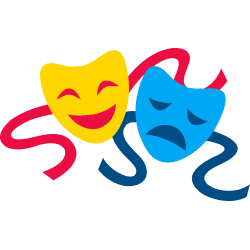
Getting into college is no laughing matter. Except when it is.
In fact, humor abounds in college admissions circles. The process of applying for college seems to lend itself to laughter.
Perhaps the most fertile ground for chuckles is the admissions essay. Some years ago, one particularly humorous essay went viral, and it’s easy to see why. Here’s how it started:
I am a dynamic figure, often seen scaling walls and crushing ice. I have been known to remodel train stations on my lunch breaks, making them more efficient in the area of heat retention. I translate ethnic slurs for Cuban refugees, I write award-winning operas, I manage time efficiently.
Occasionally, I tread water for three days in a row. . . . I have played Hamlet, I have performed open-heart surgery, and I have spoken with Elvis.
But I have not yet gone to college.
The author, Hugh Gallagher, was admitted to NYU. Not surprisingly, he went on to become an author and humorist.
A Stanford applicant penned a similarly bold essay, in response to the write-a-note-to-your-future-roommate prompt:
If you have ever: …
- Told tourists that if they “pee in the ocean,” they’ll attract great white sharks?
- Re-enacted Monty Python and the Holy Grail in its entirety before your history class?
- Memorized the first half of Whitman’s Song of Myself, because there was nothing better to do?
- Spent three days arguing with your friends about the socio-political ramifications of the word “Chick?”
Then we’re going to get along just fine!
Stanford was sufficiently impressed, and he was admitted.
The essay prompts themselves can sometimes prompt giggles. Brandeis University once asked students to answer the question, “If you could choose to be raised by robots, dinosaurs, or aliens, who would you pick? Why?” The University of Chicago once asked, “So where is Waldo, really?”
The rise of the internet as a factor in college admissions has predictably yielded some online hilarity. Jackie Milestone gained modest YouTube fame with a music video after her early admission application was deferred. The video featured an impressive collection of Yale merch, her two immense Newfoundland dogs, and the line “Yale, don’t you bail on me.” While she didn’t get into Yale, Michael McCartin got off the Johns Hopkins waitlist after submitting a rap video that showcased his encyclopedic knowledge of campus buildings and quads.
Sometimes colleges unintentionally provide the best humor. One college surely regretted a promotional video that featured as background music the Police’s “Don’t Stand So Close to Me”—in which a schoolgirl’s crush on her teacher leads to an affair.
But comedy isn’t the only common fixture in college admissions. The other is controversy.
Among the more recent scandals to hit college admissions has been tendencies at some universities to falsely inflate critical indicators of selectivity and success. A senior administrator at Claremont McKenna resigned after it was revealed that he had overstated test scores to U.S. News & World Report. Bucknell inflated its enter-class SAT scores for more than a decade. Emory University, too, played games with its admissions statistics and paid the price.
Sometimes, the college admissions scandals are more personal. MIT’s director of admissions resigned in 2007 after it was revealed that she had lied about having received degrees at two other universities (she had not). And in 2010, a student was admitted to Harvard after having lied about nearly everything in his application—including where he went to school and his perfect SAT scores. He made it through three years at Harvard, with a $50,000 scholarship, until the same lies were caught in his Rhodes and Fullbright scholarship applications.
And of course, there are the cheating scandals. Dozens of Long Island students were caught cheating on the SATs and ACTs by paying other students thousands of dollars to take the tests for them. Dozens more were caught exchanging answers on tests in their high school classes, ostensibly to increase their chances at college admissions.
And then, of course, there are the controversies created by college flubs. Just this last year, Carnegie Mellon sent acceptance letters to 800 students who had actually been rejected. Years ago, dozens of Yale applicants received a “congratulations!” letter on one day, only to receive a rejection letter the next. UC Davis had a double whammy in 2004, accidentally making scores and social security numbers available to other applicants, and then sending out 6,500 letters awarding $7,500 scholarships to students who in fact weren’t scholarship recipients.
So much tragedy and comedy, all in one place. In the end, college admissions is a quintessentially human endeavor, and so it is bound to reflect the human condition with all its ups and downs. As college admissions has become more and more complex, the opportunities for humorous happenings as well as mishaps has only increased. Here’s hoping that in the years to come, the former outweighs the latter.
This piece is part of a series of blog posts for the Western Association for College Admissions Counseling (WACAC). It is the third of five installments.


